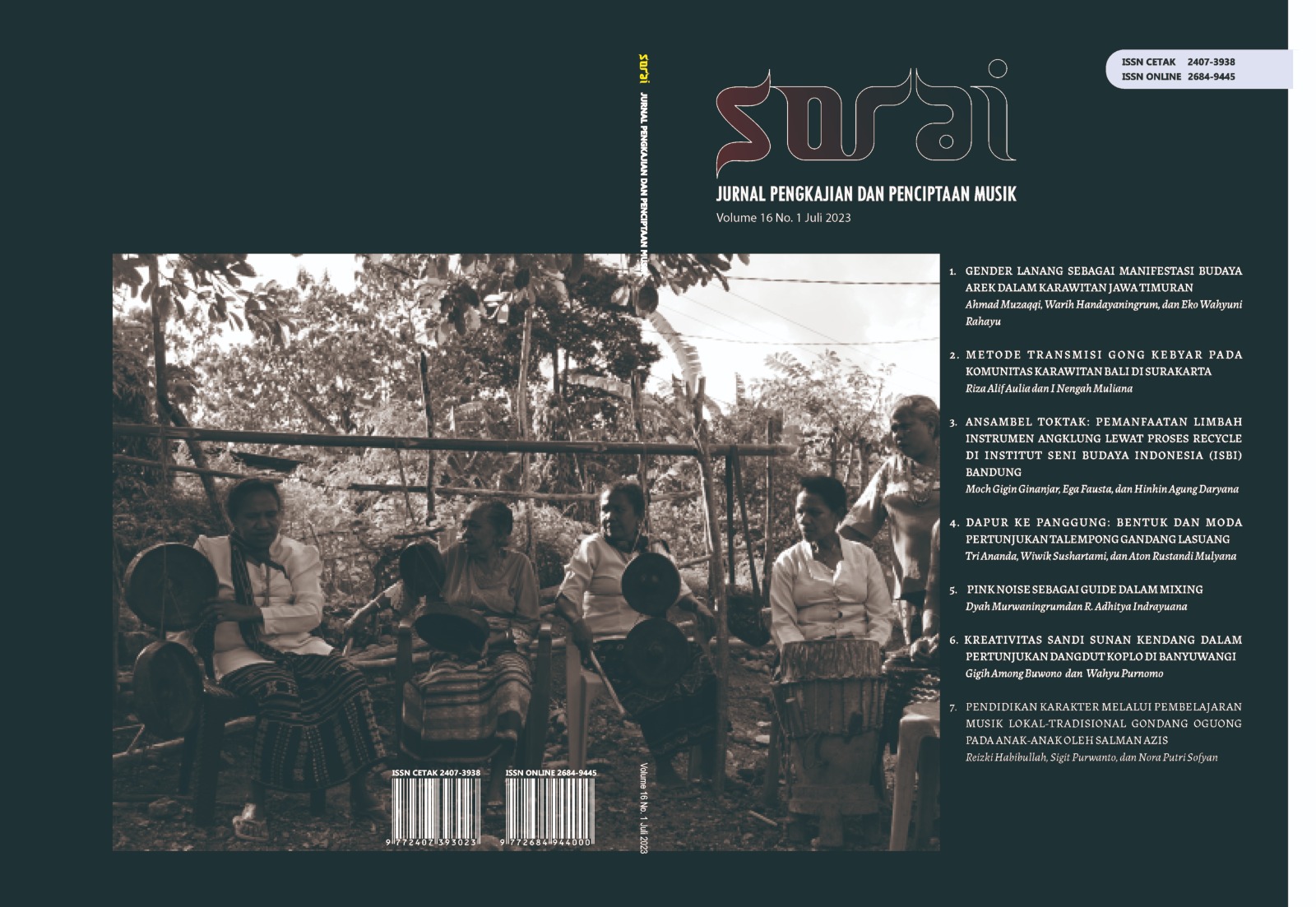METODE TRANSMISI GONG KEBYAR PADA KOMUNITAS KARAWITAN BALI DI SURAKARTA
Main Article Content
Abstract
Downloads
Article Details
Copyright
Authors who publish to Sorai: Jurnal Pengkajian dan Penciptaan Musik agrees to the following terms:
- Authors retain copyright and grant the journal right of first publication with the work simultaneously licensed under a Creative Commons Attribution License (CC BY-SA 4.0) that allows others to share the work with an acknowledgment of the work's authorship and initial publication in this journal.
- Authors can enter into separate, additional contractual arrangements for the non-exclusive distribution of the journal's published version of the work (e.g., post it to an institutional repository or edit it in a book), with an acknowledgment of its initial publication in this journal.
- Authors are permitted and encouraged to post their work online (e.g., in institutional repositories or on their website) before and during the submission process, as it can lead to productive exchanges, as well as earlier and greater citation of published work.
References
Harnish, David. 2004. “No, Not ‘Bali Hai’!
Challenges of Adaptation and
Orientalism in Performing and
Teaching Balinese Gamelan” dalam
Ed. Ted Solis, Performing
Ethnomusicology Teaching and
Representation in World Music
Ensembles. California: University of
California Press.
Lehmann, Andreas, John Sloboda, Robert
Woody. 2007. Psychology for
Musicians: Understanding and
Acquiring the Skills. New York:
Oxford University Press.
Seeger, Anthony. 1992. “Ethnography of
Music,” dalam Ed. Helen Meyers,
Ethnomusicology: an Introduction.
New York: W.W. Norton.
Sukerta, Pande Made. 1977. “Pengajaran
Karawitan Bali di Surakarta,” dalam
Ed. Pande Made Sukerta, Canang
Sari: Kumpulan Makalah 1977-
Surakarta: ISI Press.
_________________. 2009. Ensiklopedi
Karawitan Bali Edisi Kedua.
Surakarta: ISI Press.
Tim Penyusun Kamus Pusat Pembinaan
dan Pengembangan Bahasa. 2008.
Kamus Besar Bahasa Indonesia. Jakarta: Pusat Bahasa.
Irawati, Eli. 2017. “Aspek-Aspek Transmisi
Kelentangan dalam Konteks Ritual
Masyarakat Dayak Benuaq di
Kalimantan Timur”. Disertasi
Doktoral untuk mencapai derajat S3 di Universitas Gadjah Mada,
Yogyakarta.
Saba, I Ketut. 2006. “Pengenalan Model
Pembelajaran Meguru Kuping dan
Meguru Panggul dalam Pengajaran
Karawitan Jawa di STSI Surakarta,”
Bheri, Jurnal Ilmiah Musik
Nusantara Vol. 5 No.1 (September
:59-68.
Setiawan, Aris. 2013. “Konfigurasi
Karawitan Jawatimuran,” Gelar,
Jurnal Seni Budaya Volume 11
No.1 (Juli 2013):1-14
